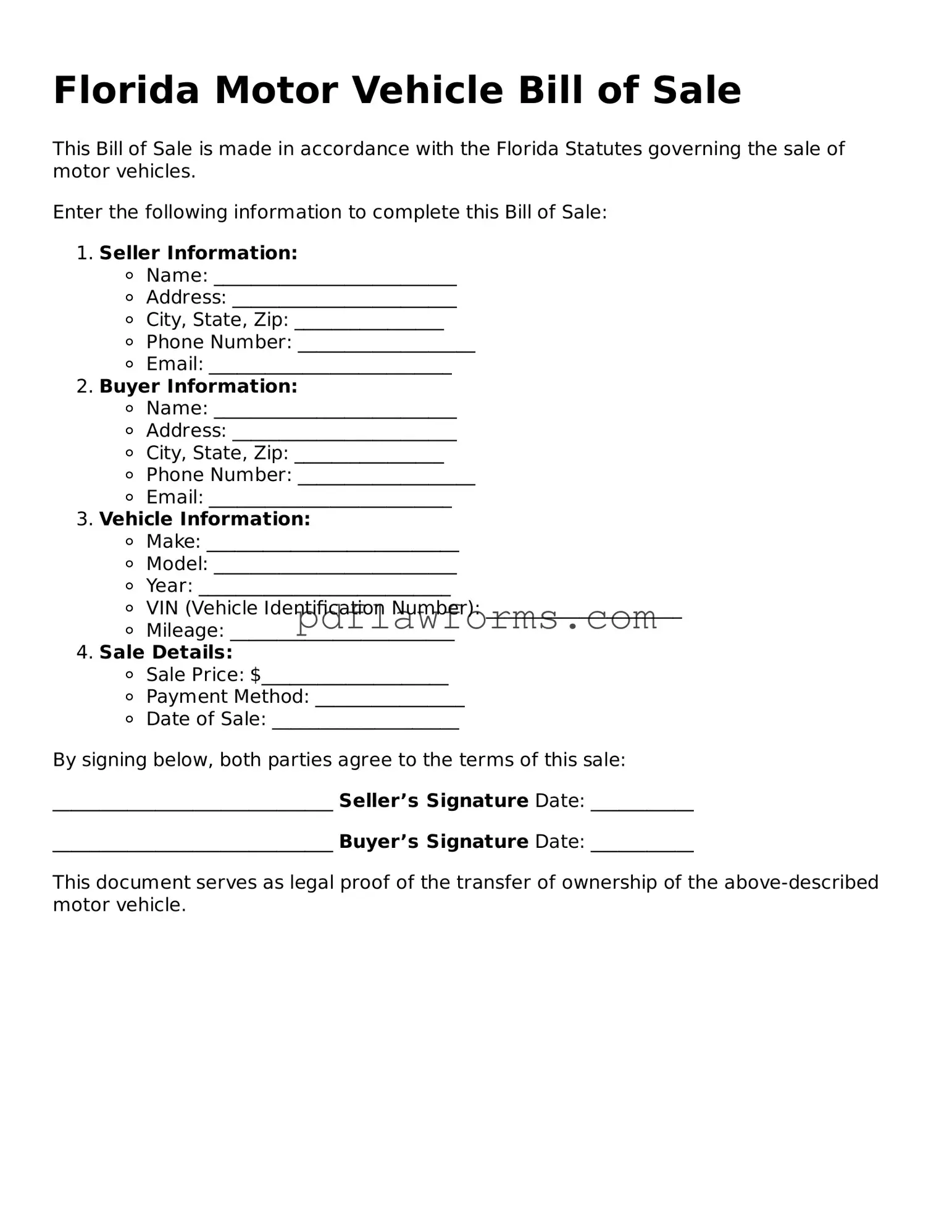Filling out the Florida Motor Vehicle Bill of Sale form can seem straightforward, but many people make common mistakes that can lead to complications later. One frequent error is omitting important information. Buyers and sellers must ensure that all fields are completed accurately, including the vehicle identification number (VIN), make, model, and year. Missing any of these details can create confusion and potentially delay the transfer of ownership.
Another mistake involves incorrect or incomplete signatures. Both the buyer and seller must sign the form to validate the transaction. Failing to do so, or signing in the wrong section, can render the document invalid. It’s essential to double-check that both parties have signed and dated the form appropriately.
Many individuals also overlook the need for a witness signature. In Florida, having a witness sign the Bill of Sale is not always required, but it can provide additional protection. Neglecting this step may lead to disputes in the future, especially if either party contests the sale.
Using outdated or incorrect versions of the form is another common pitfall. The Florida Department of Highway Safety and Motor Vehicles periodically updates its forms. Always ensure you are using the most current version to avoid any issues with the transaction.
Additionally, some people fail to keep a copy of the completed Bill of Sale for their records. This document serves as proof of the transaction and can be crucial if any disputes arise later. Always retain a copy for personal records, as well as provide one to the buyer.
Inaccurate payment details can also cause problems. When filling out the form, it’s vital to clearly state the purchase price. If the amount listed does not match what was agreed upon, it could lead to legal complications or tax issues down the line.
Another frequent error is not providing the correct odometer reading. Florida law requires sellers to disclose the vehicle's mileage at the time of sale. Failing to do so can result in penalties or disputes regarding the vehicle's condition.
People sometimes forget to include any liens on the vehicle. If there is a lien, it must be disclosed in the Bill of Sale. Not doing so could lead to legal issues for the seller and complications for the buyer.
Lastly, many individuals do not verify the buyer's identity. It’s crucial to ensure that the person you are selling to is legitimate. Requesting identification can help prevent fraud and ensure a smooth transaction.
